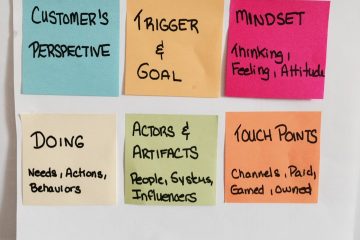Minimize the Website Redesign Debate
Does the prospect of a website redesign fill you with excitement or overwhelm you with dread? More than an online property, a website is a reflection of a company’s brand and its customer experience–and everyone has an opinion when it’s time for a redesign. When the discussions and debates start about what to do and how to do it, the person with data has a defensible answer to share and not just another opinion.
A high-profile website project can be a fantastic opportunity or dismal failure. While many things factor into how a project goes, from planning and project management to resources and culture, one thing that can help UX teams succeed is taking a data-driven approach to answering questions related to the redesign. Let’s look at what it means and how to get started.
What is data-driven design and why do it?
Data is limitless, so what exactly is a “data-driven” website design approach? Is data just numbers? Is it analytics but not interviews? Is it big, predictive, and structured or does it have to be contextual? For this article, data is defined as any information that will help inform a design approach in a meaningful way. It includes BOTH quantitative data that shows what/when/where and qualitative data that answer why. (Need a refresher? Read the Beginner’s Guide to UX Research.)
To inform the re-design process, don’t guess and assume what the problems and solutions are. Teams who gather and assess data from multiple sources develop a better understanding of the current design challenges and opportunities. The website structure, visuals, layout, functionality, copy and more benefit from a data-driven approach as part of crafting a better user experience. Data can be used by teams to:
- Discover patterns and trends, what’s working and not working, dig into problems and how to solve them.
- Improve an existing approach or idea, iterate on different versions, or experiment with incremental changes over time.
- Validate a change, new direction, or decision; confirm issues and prove unsuccessful or successful approaches.
Using data to answer common re-design questions
What data do you need, where do you find it, or what’s the best way to gather it? The only universal response to this question is, “It depends.” The data type, source, and collection method depends on the project specifics and resources so research approaches will vary. While the data used to inform the website work will vary with the problem you need to solve, there are common questions that arise with website redesigns. If you are new to data-driven design, here are five common questions and examples illustrating how data can help answer them.
(Remember these aren’t the “right” or only answers, just examples of things to try get you started with using data to inform design.)
Question: Everyone says the new site has to “do better” than the current site, but no one can tell me what that means. Where do I start?
Try: Reviewing analytics and benchmarking current performance.
To help gauge what “better in the future” could be, get immersed in what’s happening now. A site with Google Analytics, Webtrends, or other analytics program properly installed can be a tremendous source for benchmarks and performance indicators. If you don’t have a dedicated analytics person to rely on to help with analysis, here are some suggestions on data types to help focus the exploration.
- Page views and visits
- Most trafficked pages
- Traffic by type and source (organic, referral, direct, social media, keyword drivers)
- Highest ranking SERP pages
- Bounce and exit rates
- Time on site
- Content performance
- Behavior flow
- Conversions (subscribers, inquiries, sales, etc.)
- Devices and browsers
- Demographics and geographies
For example, pages that have low traffic or a high bounce rate might indicate problems with page content. Identify changes to improve the page and set a goal to increase views or engagement. Conversely, look at high traffic pages with low engagement rates. Setting goals to improve these pages will have an impact on more visitors because more people are arriving at the page.
Reminder: A high bounce rate is not necessary a bad thing, it could mean users found what they need.
Question: I have data on how people are arriving at the site and what they are doing when they get there. But why are they coming, and are they finding what they need?
Try: Adding a visitor intent and satisfaction survey.
Numbers will tell you what visitors did, but not why or if they were successful; understanding that requires qualitative data. A low cost and easy way to gather this information is a true intent visitor survey. This brief, focused survey asks why users visited the site, if they accomplished their task, and their satisfaction level with the experience. Even just a one-question quick poll can be used to gather data about whether someone found what they were looking for with little to no burden to users.
Reminder: Surveys like these should be appropriately deployed or triggered based on the user’s actions. For example, after viewing specific content, visiting a number of pages, spending a defined period of time on the site, or prior to exiting. Aggressively interrupting someone’s website experience before they even look at any content may negatively impact response rates or site satisfaction. (Writing a survey? Check out our Essential Guide to Writing Effective Survey Questions.)
Question: The designer I am working with is proposing long scrolling pages with the call-to-actions at the very bottom. She did it on a landing page and the marketing team loved it. I’ve read conflicting articles about this approach. Will people scroll, especially on smaller mobile devices?
Try: Reviewing click-tracking heatmaps and session recordings and A/B testing.
Why send links to articles with others’ opinions when it’s easy to determine the best direction with your own findings? To defend (or defeat) a design approach use data from actual user interactions with it. Providing more insight than analytics reports and requiring less labor than user research studies, tools like Mouseflow, Clicktale, Hotjar, VWO, and Inspectlet include click, hover, and scroll reports along with recordings of users page interactions. These data visuals and videos show mouse movements, scrolling activity and how frequently page elements are interacted with on a webpage.
A/B testing can then be used to compare different design versions and determine which one is more successful. While these tools won’t tell you why someone isn’t clicking on the big green button at the bottom of a long page, they will show if it was even within view on mobile, tablet, and desktop devices.
Reminder: Mouse movement doesn’t equal eye movement, but studies show the average distance between the cursor and the eye gaze focus is about 90 pixels. (Source: Gaze and mouse coordination in everyday work PDF.)
Question: The client stakeholders agree the company’s website navigation is confusing, but there’s no consensus on a better organization—except that it should model the departmental structure. How do I convince them internally-focused navigation won’t be intuitive to external users?
Try: Conducting card sorts and a tree test.
Too often website navigation is organized according to the opinions of stakeholders. Users come to a site with expectations regarding terms, language, and organization, and an outsider’s perspective is very different from someone who is familiar with the company, its products, and the website architecture. Data from a card sort can help improve the navigation to match the mental models of the site’s users. If there’s even debate about the categories and labels, use an open card sort to explore new directions. A closed sort can help validate a proposed direction or compare versions to see which performs best.
Need more data? Add tree testing (reverse card sorting), to assess the findability of items within the site structure. Why do both? Users process information differently when sorting information versus seeking it. These results will help identify which labels are not clear and/or what items are being placed in the “wrong” category. (Learn about The Hidden Dangers of Tree Testing)
Reminder: By splitting tests between external and internal users, you’ll have data to contrast stakeholders’ internal results versus the reality of the target audiences results.
Question: One of the goals of the new site is to increase email subscriptions. We have a pop-up subscribe promotion now but the opt-in numbers are dismal. How do users feel about it? Why aren’t they subscribing?
Try: Ask them!
Numerical data alone doesn’t answer many questions related to user experience. If you want to know why people do or don’t do something, or how they feel about it, ask them. The data-gathering method could be a quick one-question poll triggered on action that asks, “Why didn’t you subscribe today?” or “What content would you be interested in?” But in this example where the site already has an aggressive pop-up interrupting the user, it could be an additional annoyance. Plus, a survey won’t allow for exploration of the topic. Is the problem the promotion or the e-newsletter focus? A more insightful alternative could be to include a question about the email subscription as part of a user research study. Asking what type of information the person would be interested in receiving or what would prompt them to subscribe can generate new ideas for content or how to promote the email on the page. Quantitative research, combined with qualitative, can provide a more insightful view of what is working and opportunities for improvement.
The most effective websites are the ones that put the user first
Data helps facilitate understanding about users. The design team, project lead, or client stakeholders are not the users and failing to include data from them in the process jeopardizes the potential for the initiative’s success. Tailoring a site to address the goals, behaviors, needs, and preferences of the target audience will help users be more efficient and satisfied–which translates to making the website more effective. Depending on the conversion goals for the site, this could mean increased engagement, subscribers, leads, or sales. Commit to using data to inform design direction and you’re sure to see a return in results.
What are you waiting for? Go collect some data! For more information and project examples, check out these resources and case studies.
- The Beginner’s Guide to UX Research
- When to Use which User Research Method
- Data-Driven Design in the Real World
- Six Myths about Data-Driven Design
- Getting Started with Data Driven Design
- How Heat Maps and Visual Analytics Help Read Visitors Minds
- AMA Case Study: How to Use Data to Inform a Website Redesign
- Optimizely Case Study: Behind the Scenes of a Data-Driven Website Redesign


